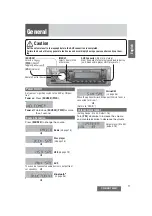
2
QUICK START PROCEDURES
Refer to
Figures 1–4
for proper measurement
equipment setup and follow the procedure outlined
below:
The equipment setup for the three circuits is very
similar. They all have three pins marked “Vin,”
“Gnd” and “Vout,” and a jumper marked “on/off”
for demonstrating the shutdown function.
For the best accuracy it is important to connect true
RMS reading voltmeters directly to the PCB termi-
nals, where the input and output voltage are con-
nected. True RMS reading ammeters should be
used for current measurements.
The SHUTDOWN function is tested by placing the
jumper in the “off” position. This will short the
shutdown pin to ground and turn off the internal
switch of the LT1930/LT1931. Placing the jumper in
the “on” position will return the circuit to normal
operation.
Quick Start for the Boost Circuit:
1. Before turning on the power, connect a 5V, 1A
bench supply to the Vin and Gnd terminals and
connect the output loads (up to 300mA). When an
electronic load is used, decrease load current set-
ting to less than 100mA until the output voltage has
stabilized. Connect an oscilloscope and meters to
the Vout and Gnd terminals, as shown in Figure 1.
2. Turn on the input power supply and observe the
output. The DC383 Boost converter is programmed
to generate 12V from 5V input. The circuit will de-
liver up to 300mA at 12V.
3. The current limit is tested by increasing the load
past 400mA. The current limit will take effect when
the peak switch current becomes higher than ~1A.
When the current limit is exceeded, the output volt-
age will drop drastically. Return to normal operation
by removing the load.
Quick Start for the SEPIC Circuit:
1. Before turning on the power, connect a 16V, 1A
bench supply to the Vin and Gnd terminals and
connect the output loads (up to 300mA). When an
electronic load is used, decrease load current set-
ting to less than 100mA until the output voltage has
stabilized. Connect oscilloscope and meters to the
Vout and Gnd terminals, as shown in Figure 2.
2. Turn on the input power supply and observe the
output. The DC383 SEPIC Circuit is programmed to
generate 12V from a 10V–16V input. Vary the input
voltage to test the line regulation. The circuit is de-
signed to deliver up to 300mA at a 12V output.
3. The current limit is tested by increasing the load
past 400mA. The current limit will take effect when
the peak switch current becomes higher than ~1A.
When the current limit is exceeded, the output volt-
age will drop drastically. Return to normal operation
by removing the load.
Quick Start for the Inverter Circuit:
1. Before turning on the power, connect a 12V, 1A
bench supply to the Vin and Gnd terminals and
connect the output loads (up to 300mA). When an
electronic load is used, decrease load current set-
ting to less than 100mA until the output voltage has
stabilized. Connect oscilloscope and meters to the
Vout and Gnd terminals, as shown in Figure 3.
2. Turn on the input power supply and observe the
output. The DC383 Inverter Circuit is programmed
to generate –12V from a +12V input. The circuit will
deliver up to 300mA at –12V.

























